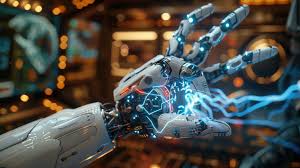Advances in medical technology are changing how healthcare providers perform difficult surgeries. Robotic surgery is notable for its precision in complex cases, providing benefits that traditional methods often can’t match. Here is how robotic surgery works, why it is especially effective for intricate procedures, and the advantages it offers for both patients and surgeons:
What Is Robotic Surgery?
This surgery method uses advanced systems controlled by surgeons to perform delicate procedures. These systems have robotic arms fitted with tiny instruments and cameras that mimic the surgeon’s hand movements with precision. Unlike traditional surgeries, which can be affected by the human body, robotic systems help minimize tiny errors.
Why Does Precision Matter?
Precise techniques may produce better results, especially when there’s little room for error. Robotic surgery helps surgeons make tiny adjustments, making it possible to operate in hard-to-reach areas. In heart surgeries or cancer treatments, robotic tools provide exceptional steadiness and control.
Traditional surgery relies on a surgeon’s skill to cut, sew, or manipulate tissues accurately. Fatigue or tremors can affect the outcome during long surgeries. In contrast, robotic systems overcome human limitations by using steady hand movements, allowing surgeons to perform complex tasks more accurately than with conventional methods.
Does It Reduce Risks?
Robotic surgery may reduce complications during complex operations. It offers measurable benefits such as less blood loss, lower infection risk, and faster recovery times. The increased precision allows surgeons to target specific areas, minimizing damage to healthy tissues nearby. Here’s how this approach to surgery enhances safety in practical ways:
- Minimized Incisions: Robotic tools enable minimally invasive jobs with smaller cuts, which may lower infection risk and promote quicker healing.
- Enhanced Visuals: High-definition 3D cameras may give surgeons a clearer view than traditional methods.
These advantages make procedures safer, especially for patients with preexisting conditions that increase risks.
Are There Patient Benefits?
From a patient’s perspective, this approach to surgery offers better outcomes that enhance recovery and quality of life. It promotes faster healing, less scarring, and less pain after the surgery. These benefits come from the minimally invasive techniques made possible by robotic precision. This not only makes patients more comfortable but also shortens hospital stays. Long-term results also tend to improve. Overall, modern technology can lead to significant improvements in patients’ lives.
How Do Surgeons Benefit?
Robotic surgery is transforming how surgeons operate. Instead of standing for long hours or repeating the same movements, surgeons sit aside. This may reduce physical strain, even during lengthy procedures, and offers more flexibility than traditional methods.
In addition to comfort, robotic systems provide greater control and precision. This improved accuracy leads to higher success rates in complex surgeries and helps surgeons enhance their skills. Many systems also include simulation features, allowing surgeons to practice and improve in a safe environment.
Ask About Robotic Surgery
Robotics in surgery aligns with a growing trend toward precision medicine, tailoring care to each patient’s unique body. The technology is evolving, offering new applications across specialties. With better tools and ongoing innovation, robotic systems stand to play a larger role in addressing challenging medical jobs. Patients and healthcare providers use these advancements for good reason. Schedule an appointment with a surgeon near you.









Leave a Reply